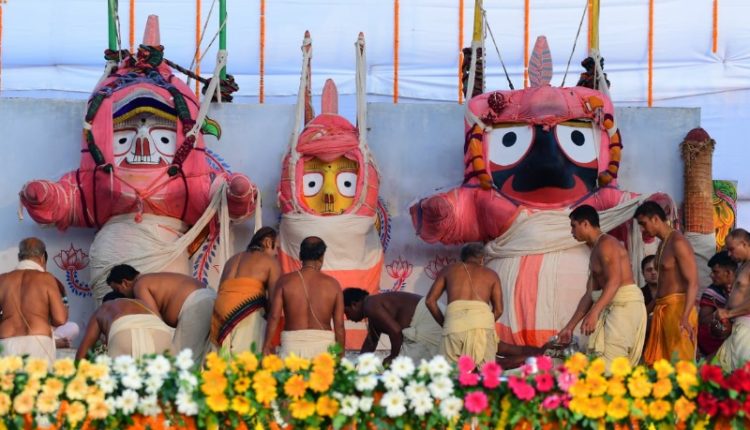Snana Jatra LIVE from Puri – Know More about Debasnana Purnima
Debasnana Purnima heralds the start of the Ratha Jatra, one of Odisha's most important festivals of the year.
Snana Jatra LIVE ?
Debasnana Purnima heralds the start of the Ratha Jatra, one of Odisha’s most important festivals of the year. It is a lengthy ceremony that includes washing the idols and preparing them for the chariot festival, and centred upon the sacred triad of Lord Jagannath, Lord Balabhadra, and Devi Subhadra. Today marks the auspicious occasion of Snana Jatra.
The Snana Mandap (the bathing pandal) is located on the eastern side of the Jagannath temple in Puri and is 75 feet in length. It is at such a height that worshippers standing just outside the temple may have a clear view of the deities.
Lord Jagannath, Lord Balabhadra, and Devi Subhadra are actually bound to their respective spots in the Snana Mandap to keep the statues in place. The deities’ “perspiration” is washed off their faces with camphor water after the Dhaadi Pahandi (seating the idols one after the other in a procession).
The previous night, 108 pots of water were pulled from the Suna Kua (well) of the goddess Sitala’s shrine to bathe the goddesses. This well exists solely to store water that is only extracted once a year for the Debasnana Purnima. With the addition of sandalwood paste, camphor, saffron, and areca nut, the 108 pots of water become extremely aromatic .
Support Independent Journalism? Keep us live.
The Chhera Panhara ceremony of the Snana Mandap by the Gajapati King of Puri begins after the aromatic water is poured on the idols. The servitors next execute the Hati Besa, in which Lords Jagannath and Balabhadra are dressed as elephants and Devi Subhadra is decked with lotus blossoms. Due to Covid guidelines, the King won’t perform Chhera Panhara this year too. His ‘Mudirasta’ will do the duty.
Devotees can then enjoy open darshan of the deities (online, as public darshan is banned this year too due to Covid-19), also known as Sahana Mela. Snana Purnima is the one time of the year when everyone, regardless of faith, may see the holy trio.
After the bath, the holy trio retires to the Anabasara Pindi (part of the sanctum sanctorum), where they recover. For the next 15 days, they will not be available for devotees to see. Anasara is the fortnight during which the lords become ill.
The Anasara Pana (a concoction produced from forest materials) whipped up by the Daitapatis, descendants of Biswabasu, is used to treat the deities’ illnesses. The Daitapatis are servants who are only given the chance to serve the holy triad once a year, at Anasara.
The colours of the idols are wiped away when they are bathed. As a result, on the 16th day, they are meticulously painted and adorned anew, and they take their positions on the Ratna Singhasan for devotees’ gaze before heading to the Ratha Jatra.


Comments are closed.